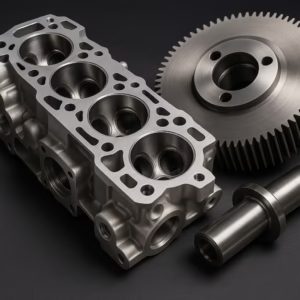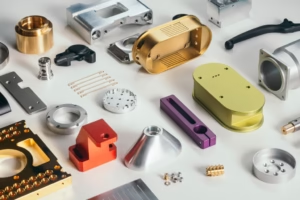Mastering the Art of Forging Aluminum Process

Mastering the Art of Forging Aluminum Process Aluminum forging is a revolutionary process in metalworking that blends engineering precision with artistic expression. Gaining proficiency in the aluminum forging process allows one to transform raw materials into solid shapes that are used in the automotive and aerospace sectors. This technique is crucial for contemporary producers since it not only increases material strength but also drastically lowers weight. History of Aluminum Forging When new production techniques were introduced by the Industrial Revolution in the early 20th century, aluminum forging’s history began. At first, aluminum was a costly and scarce metal that was only utilized in small amounts for certain applications. But as extraction and processing methods improved, aluminum became more widely available and reasonably priced, opening the door for its extensive application across a range of sectors. Important turning points were reached as the forging process developed, such as the development of precision forging methods and hydraulic presses. These developments made it possible to shape aluminum with more precision and control, producing high-quality parts for vital applications. The need for strong, lightweight materials increased during World War II, which sped up the development of aluminum forging. The development of aluminum forging was especially advantageous to the aerospace sector, which used forged parts to improve aircraft performance and fuel economy. trial-and-error and increase productivity by simulating and optimizing forging operations using modern technologies. Further, ongoing research and development have produced new aluminum alloys with enhanced mechanical qualities, increasing the range of uses for items made of forged aluminum. Key Techniques in Aluminum Forging Aluminum forging encompasses various techniques, each designed to achieve specific outcomes based on the desired properties of the final product. One of the most common techniques is open-die forging, also known as smith forging. In this method, the aluminum billet is placed between two flat dies and hammered or pressed to achieve the desired shape. Open-die forging is particularly useful for producing large and simple shapes, such as bars, rings, and custom components, with excellent grain flow and mechanical properties. Another widely used technique is closed-die forging, also referred to as impression-die forging. This process involves placing the aluminum billet into a die that contains a pre-formed cavity of the desired shape. The billet is then compressed, forcing it to fill the cavity and take on the shape of the die. Closed-die forging is ideal for producing complex and precise components with tight tolerances, making it a popular choice for the automotive and aerospace industries. The process ensures uniformity and consistency in the final product, which is crucial for applications requiring high performance and reliability. Isothermal forging is a more advanced technique that involves maintaining the die and workpiece at a constant temperature throughout the forging process. This approach minimizes thermal gradients and reduces the risk of defects, such as cracks and warping. Isothermal forging is often used for high-performance applications where the material properties must be carefully controlled, such as in the production of aircraft engine components. Each of these techniques offers unique advantages, and selecting the appropriate method depends on factors such as the complexity of the part, production volume, and specific material requirements. Benefits of Forging Aluminum Among the several methods used in aluminum forging, open-die forging, sometimes referred to as smith forging, is one of the most used methods. This process hammers or presses the aluminum billet into the required shape by sandwiching it between two flat dies. Large, straightforward shapes like bars, rings, and bespoke components with superior grain flow and mechanical qualities are especially well-suited for open-die forging. Another popular method is impression-die forging, sometimes known as closed-die forging. For applications needing great performance and dependability, the aluminum billet is placed into a die that has a pre-formed cavity of the appropriate shape. Keeping the die and workpiece at a consistent temperature during the forging process is the more sophisticated method known as isothermal forging. This method lowers the chance of flaws like warping and cracking and minimizes heat gradients. High-performance applications where material properties need to be precisely regulated, such the manufacturing of aviation engine components, frequently use isothermal forging. Each of these approaches has advantages of its own, and the part’s complexity, production volume, and material needs all play a role in choosing the best approach. Applications of Forged Aluminum Products Because of their exceptional strength, light weight, and resistance to corrosion, forged aluminum products are widely used in many different industries. In the aerospace industry, forged aluminum parts are crucial for building the wings, fuselage, and landing gear of aircraft. Because of its high strength-to-weight ratio, forged aluminum may be used to create parts that are both lightweight and strong enough to survive the harsh conditions that are encountered during flight. Furthermore, the dependability and security of vital aircraft components are guaranteed by the exact tolerances and consistency attained through forging. Another significant user of forged aluminum products is the automotive sector. Aluminum is frequently forged to improve performance and save weight in engine parts including crankshafts, pistons, and connecting rods. In these applications, forged aluminum improves overall vehicle dynamics, lowers pollutants, and increases fuel efficiency. In addition to the engine, forged aluminum is utilized in wheels, suspension systems, and other structural elements, helping to achieve the lightweighting goals that are essential to contemporary vehicle design. Forged aluminum products are used in many different types of machinery and infrastructure projects in the construction and industrial sectors. Forged aluminum components are essential to the strength and longevity of heavy gear, including cranes and earthmoving equipment. Applications in construction include fasteners and connectors that need to endure heavy loads and environmental pressures, as well as structural components like beams and columns. For demanding industrial applications where lifespan and dependability are critical, forged aluminum is the material of choice because to its performance and versatility. The Forging Process: Step-by-Step Overview Choosing the right aluminum alloy based on the particular needs of the finished product is the first step in the forging process. After that,



